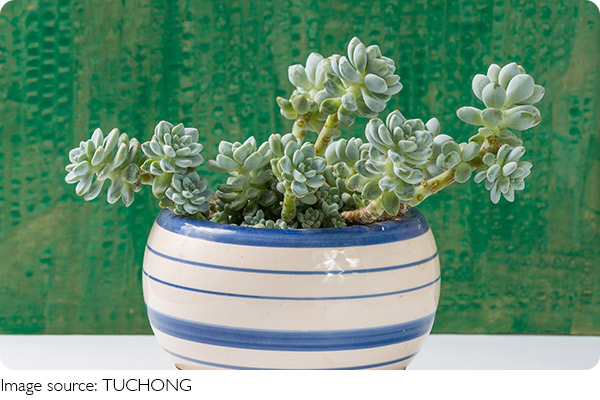Exploring The Green

Succulents have become increasingly popular in recent years, adorning windowsills, offices, and gardens alike.
These hardy plants are known for their unique appearance and ability to thrive in various environments with minimal care.
Beyond their aesthetic appeal, raising succulents offers numerous benefits, though there are some considerations to keep in mind. In this article, let's delve into the five advantages and one potential drawback of cultivating succulents.
Benefits
1. Low Maintenance
One of the most significant advantages of succulents is their low maintenance requirements. These plants are well-suited for individuals with busy lifestyles or those who lack a green thumb. Succulents thrive in arid conditions and can tolerate infrequent watering, making them ideal for forgetful or novice gardeners. With minimal attention, succulents can flourish, providing greenery without demanding constant care.
2. Diverse Variety
Succulents come in a wide array of shapes, sizes, and colors, offering endless options for botanical enthusiasts. From the iconic rosettes of echeveria to the spiky arms of aloe vera, there's a succulent to suit every taste and style. This diversity allows for creative expression in landscaping and interior design, as succulents can be arranged in captivating arrangements or used as focal points in gardens.

3. Air Purification
Beyond their ornamental appeal, succulents contribute to indoor air quality by filtering out toxins and purifying the air. Like other houseplants, succulents absorb carbon dioxide and release oxygen during photosynthesis, helping to improve air circulation and create a healthier indoor environment. Additionally, some succulent varieties, such as Snake Plant (Sansevieria), are known for their ability to remove harmful pollutants like formaldehyde and benzene from the air.
4. Stress Reduction
Studies have shown that interacting with nature, even in small doses, can have a positive impact on mental health and well-being. Raising succulents provides an opportunity for individuals to connect with nature on a daily basis, fostering a sense of calm and tranquility. Tending to succulents, whether through watering, repotting, or simply admiring their beauty, can serve as a therapeutic activity, reducing stress and promoting relaxation.
5. Sustainable Gardening
Succulents are inherently sustainable plants, requiring minimal resources to thrive. Their ability to store water in their leaves and stems allows them to survive in drought-prone regions, making them a resilient choice for eco-conscious gardeners. Furthermore, propagating succulents from cuttings or offsets is a cost-effective way to expand your collection without relying on store-bought plants. By cultivating succulents, individuals can participate in sustainable gardening practices and reduce their environmental footprint.
Drawback
1. Overwatering Risk
While succulents are renowned for their drought tolerance, they are susceptible to root rot if overwatered. One of the most common mistakes made by succulent enthusiasts is watering their plants too frequently or using improper drainage. Excessive moisture can lead to soggy soil conditions, causing the roots to rot and ultimately killing the plant. To prevent this issue, it's essential to allow the soil to dry out between waterings and use well-draining potting mixtures designed specifically for succulents.
Raising succulents offers a host of benefits, from their low maintenance requirements to their air-purifying properties and stress-reducing effects. With their diverse variety and sustainable gardening practices, succulents have earned their place as beloved additions to indoor and outdoor spaces. However, it's crucial to be mindful of the potential drawback of overwatering, which can pose a risk to succulent health. By understanding these advantages and considerations, individuals can enjoy the beauty and rewards of cultivating succulents in their homes and gardens.


